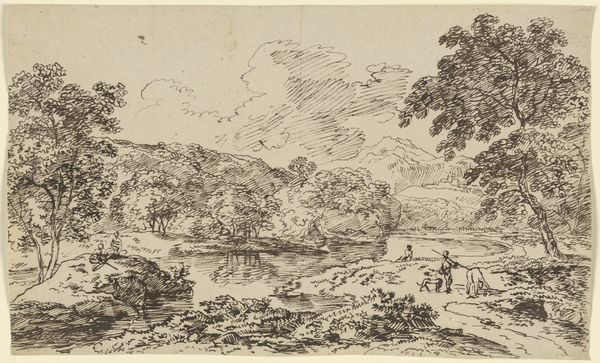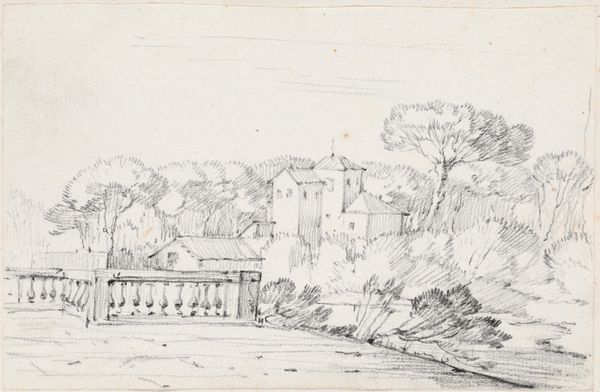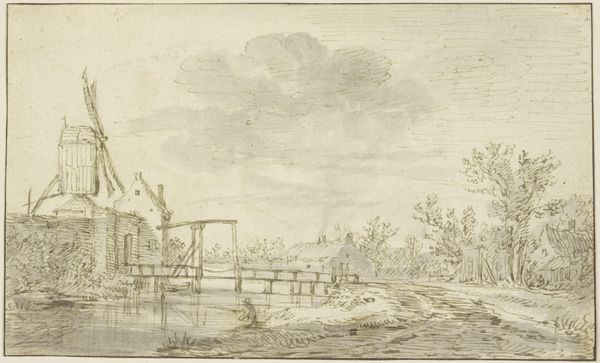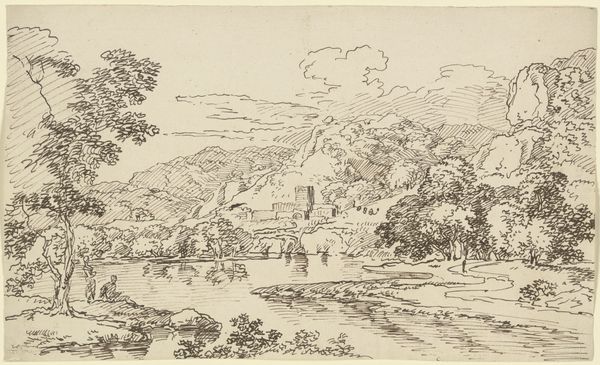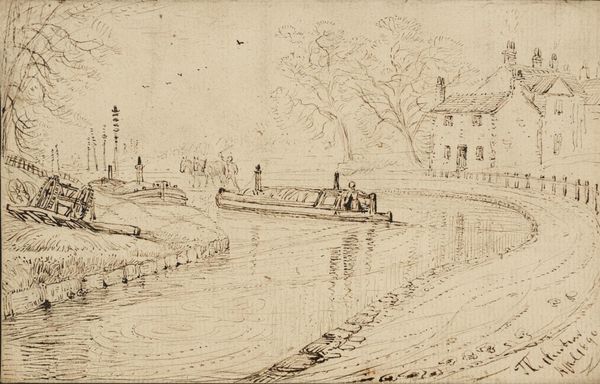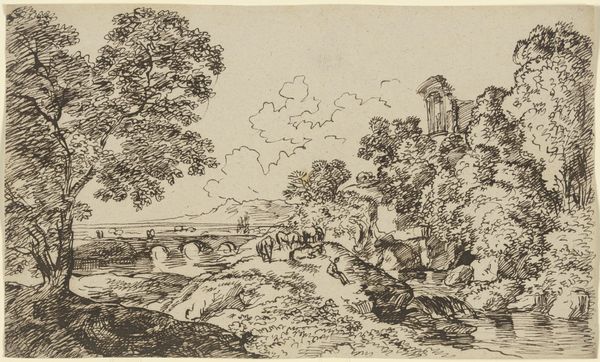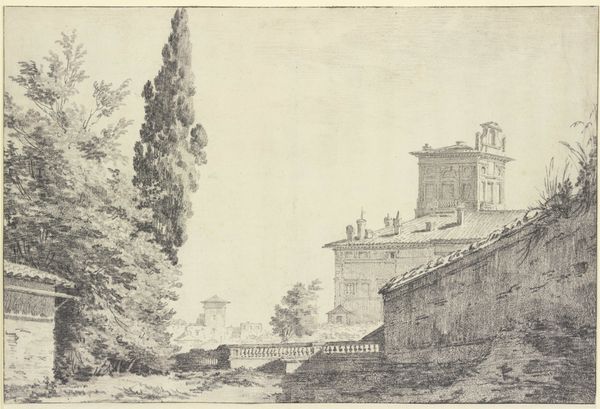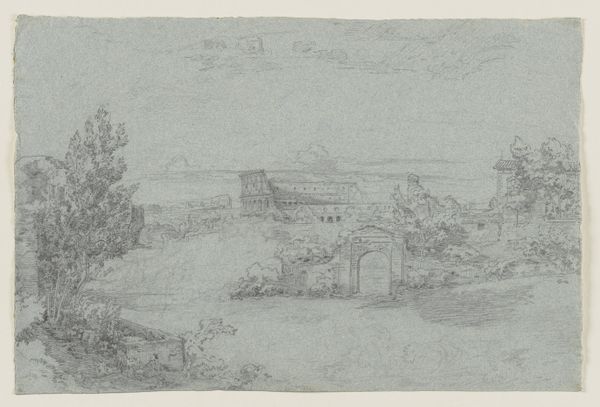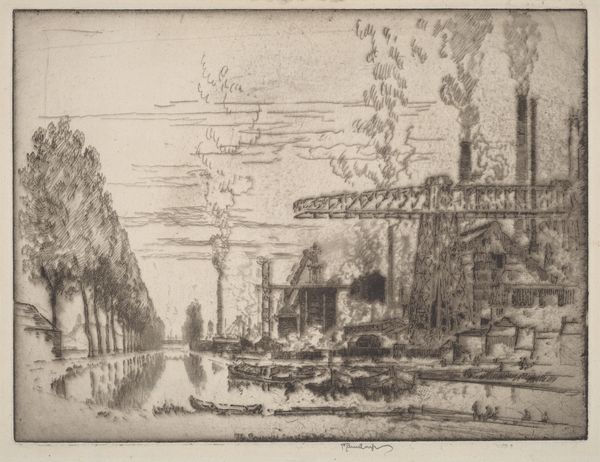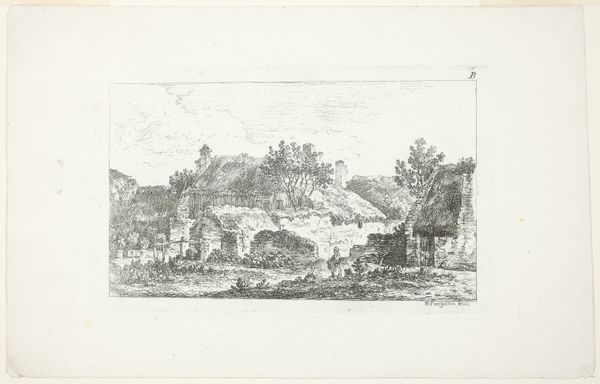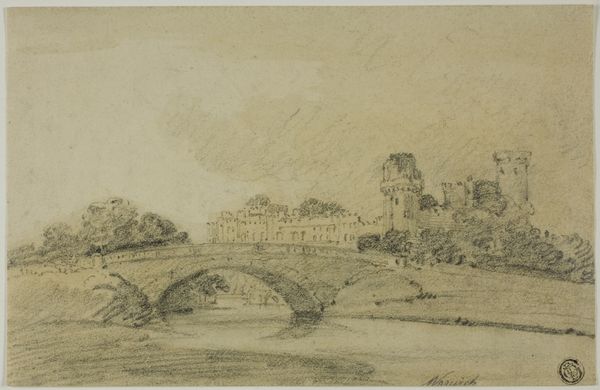
drawing, ink
#
drawing
#
neoclacissism
#
landscape
#
ink
#
romanticism
Copyright: Public Domain
Curator: This is a pen and ink drawing attributed to Franz Kobell, titled "Parklandschaft mit großem Wasserbecken." Editor: The cross-hatching gives the park this dream-like state. What a contrast to the clear lines of that Grecian-looking building! It almost looks pasted in, a symbol of power and maybe detachment from nature? Curator: Well, it represents an interesting interplay of Romanticism and Neoclassicism—think of how idealized nature intersected with these architectural forms in 18th- and 19th-century estates. This isn't just about beauty. These estates had very real implications for labor and control over resources. Editor: Ah, the hidden narratives! We see ducks and lounging figures, so seemingly idyllic. But who maintained the park? The drawing itself, made of ink, involved a specific process of manufacturing and distribution—connecting art to larger economies of production. Curator: Precisely! Consider the labor involved in creating and maintaining this space. Where did the materials for the ink originate, who produced the paper? Every line represents a chain of production and consumption. Also, consider how Kobell rendered nature – controlled and shaped for leisure. This informs social hierarchies in tangible ways. Editor: Good point, look at how strategic the placement of the building and dome are. The eye is not allowed to freely travel past these symbols of domination. There is a great interplay with light, especially when you realize what work would be involved in maintaining such "natural" lighting, as everything is carefully grown, trimmed and organized by hand. What did the labor look like for the individuals doing the caretaking? Were they enslaved or paid serfs? This romantic ideal becomes haunting when considered through the eyes of workers and not nobles. Curator: Exactly! It reminds us to look beyond the aesthetic charm to the societal systems embedded in even the most “natural” landscapes. The leisure and privilege of some came directly from the toil and often oppression of others. Editor: Yes, interrogating these power dynamics allows a deeper understanding. The material beauty isn't inherently benign, but rather, inextricably tied to historical systems of control and production. Curator: Thank you for joining me on that insightful journey. I found exploring the drawing in terms of material conditions especially insightful. Editor: A fascinating analysis! Now, hopefully, people will look at similar images, or visit similar sites, and ponder the complex histories behind our notions of beauty and leisure.
Comments
No comments
Be the first to comment and join the conversation on the ultimate creative platform.
